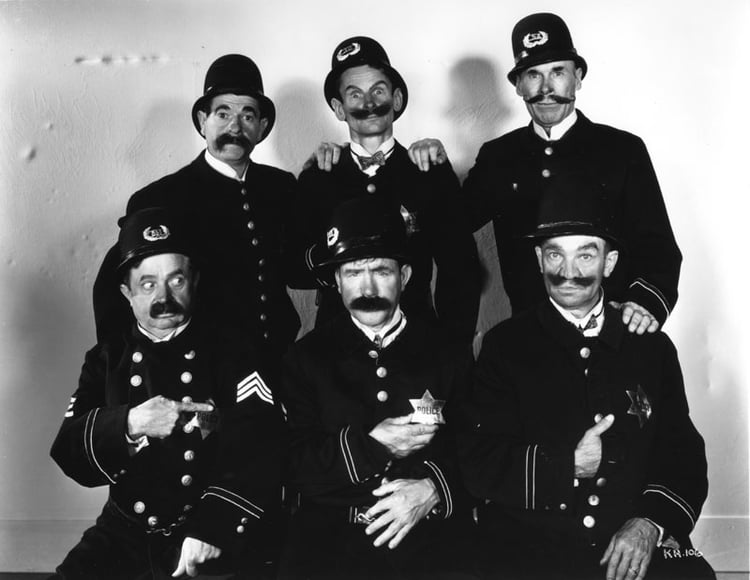Are the Ghosts of the Keystone Cops Haunting Your Crisis Plan?

Anyone still remember the Keystone Cops?
They are a fictional group of policemen who first appeared on film in 1912 and
became hugely popular as supporting players in movies by the likes of Charlie
Chaplin.
They were known for their high energy but chaotic and bumbling response to
criminal activity, so much so that the phrase ‘Keystone Cops’ passed into the
common vernacular as shorthand criticism of anyone who put a lot of effort into being uncoordinated and ineffective.
We’ve seen a lot of examples of Keystone Cop-type responses to crises so far in 2017.
One sure way to avoid your response looking like a scene from a 100-year old
silent comedy is to have a great crisis plan.
With so many organizations having out-of-date or non-existent crisis plans, in this series of blogs we are looking at how to enable the speed of response required in the age of social media.
As I noted in my previous blog, from my experience, the key areas of a state-of-the-art crisis plan are:
- Understand the difference between an issue and a crisis
- Clear and roles & responsibilities for the crisis team
- Identification and tracking of the issues
- Comprehensive worst case scenario planning
In the last blog, we looked at issues and crisis and how a plan must differentiate between the two. This time we look more closely at creating clear roles and responsibilities for the crisis team.
When the worst happens, everyone on your crisis team and any external resources that you deploy, have to know what they need to do, with who they must collaborate – and the processes to make all that happen.
With a crisis quickly unfolding, there is no time for training - and ad-hoc responses lead to Keystone Cops tragi-comedies.
Generally, I recommend three levels in an organization’s crisis team.
- The Communications Team: Usually staffed by Corporate Communications but also sometimes an external agency, this team is responsible for identifying, tracking and interpreting the visibility of an emerging issues in areas such as newspapers, broadcast media, social media & digital forums and within policy/regulatory groups. This allows for pro-active monitoring of key communication channels and constant evaluation of the level of risk.
- The Crisis Management Team:
It comprises a wider array of function heads (Legal, HR, IT, Facilities, Operations, Marketing, Sales) and product line leadership within the organization.
While not full-time crisis managers or communicators, the individual members of the team are clearly identified, with contact details listed in your crisis plan and they receive regular information and training to enable them to perform their crisis management role at the highest level.
Once alerted by the Communications Team of an escalating issue, the job of the Crisis Management Team is to follow monitoring reports, assess the risk and add specific counsel based on their specialist expertise, function or product knowledge to build an appropriate response plan.
- The Crisis Strategy Team:
This is the most senior representatives of the organization. If the threat is especially serious or has ramifications in countries outside the US, it will also involve senior management from other regions.
In the circumstances of an extremely dire threat or in a full-blown crisis, the Crisis Strategy Team directs planning and crisis responses, allocates and directs resources (people, money, equipment) and makes the final decisions regarding the proposed plans of action.
The Crisis Management Team and the Communications Team provide information, counsel and recommendations to the Crisis Strategy Team – and all three levels meet as one team during a full-blown crisis until the situation is under control and the threat contained.
The most prosaic part of any plan becomes the most important element when the worst happens – being able to access and activate the team, having confidence that contact details are up to date and that all members of the team have been trained and tested for their roles.
Once you have mapped the individual team member’s roles and responsibilities, and listed all the contact details, then you then need to deploy technology, such as RockDove’s own In Case of Crisis mobile app, to access and activate the team for that moment when the crisis breaks.
Does your current plan and preparedness make you confident that the Keystone Cops would never appear in your crisis response?










